
2023 Mazda MX-30 Review: This is the New Way - Online Car Marketplace for Used & New Cars

Mazda’s first series production electric vehicle for Singapore is packed with familiar Mazda-esque traits, but there’s a drawback to the whole package
SINGAPORE
This isn’t a Mazda CX-30. It’s similar in size and shape to Mazda’s popular small crossover SUV, but the MX-30 is made of different body panels and uses a totally different drive system, an all-electric one.

The MX-30 was announced to be going on sale in Singapore at the 2023 Motorshow here, and besides having a trendy silhouette it also resurrects another very Mazda design feature that we last saw in its RX-8 coupe: the forward-facing freestyle rear doors.

This kind of makes the MX-30 a three-door electric vehicle with two additional supplementary doors, but it really doesn’t sound as inconvenient as you might imagine it to be. The rear doors only unlatch when the front ones are open because the B-pillar, which in other cars is that chunky pillar that the back door hinges on, now forms the front edge of the rear door. Opening it reveals a very wide opening for access into the back seats. It’s reasonably comfortable in the back, with a cosy atmosphere aided by the smallish, non-opening rear windows.

Up front, the electric drive status of the car may not even seem obvious to a casual passenger, at least until the car is switched on and then the only real ambient noise in the car is that of the air-conditioning fan. The layout is very Mazda, with a driver-centric focus and all-round great build quality.
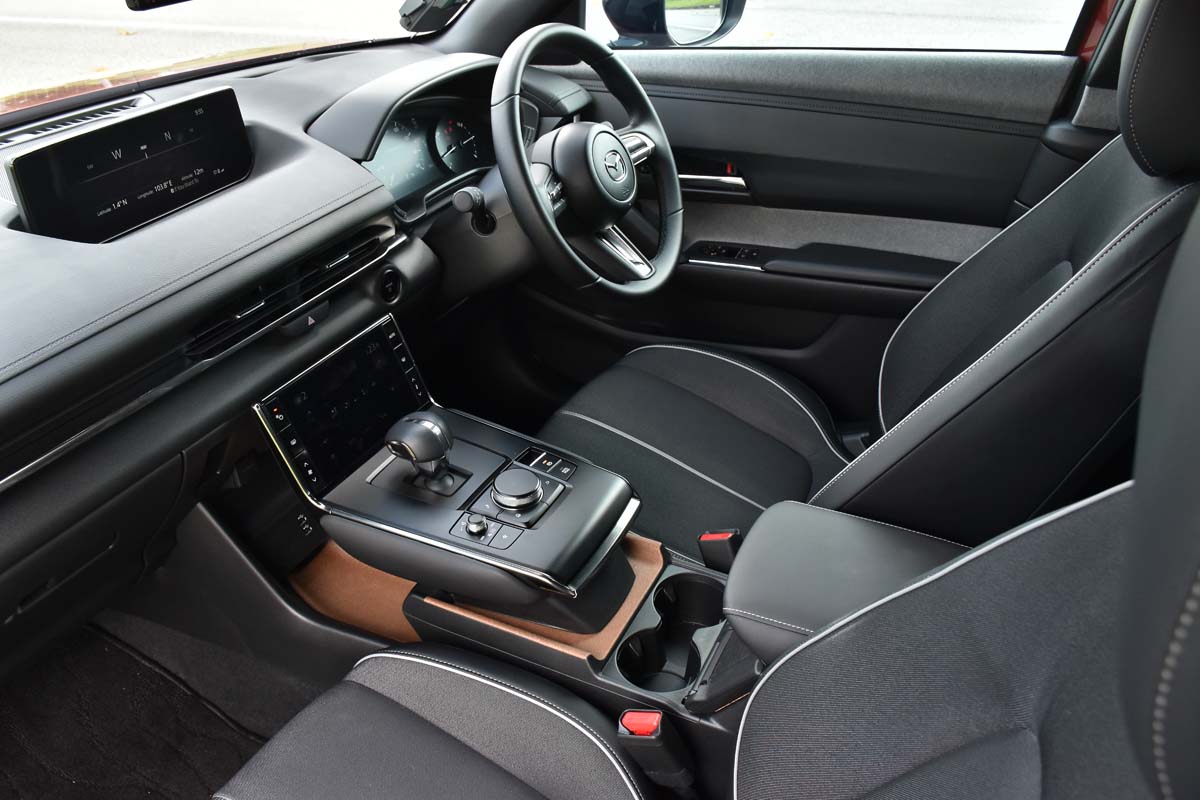
The eco-sustainable factor of the MX-30 comes through in the use of materials in the cabin. The seat upholstery is made from recycled PET bottles, the door interior padding is woven from material that contains recycled threads, and the trays on the centre console are padded with natural cork rather than foam for easier recycling.

The electric Volvo C40 has a similar build philosophy, but here the Mazda MX-30 takes it one step further with more visible use of sustainable, recycled materials. Singaporeans tend to have an unhealthy obsession with leather upholstery in a car, even fake PVC leather, but the fabrics of the MX-30 are really comfortable, top-grade stuff.

While many electric vehicles work on making the cabin more spacious since there is no need to leave space for an exhaust pipe and the various components of an internal combustion engine, the MX-30 is still quite car-like inside.

The twin-screens, one on the the top of the dashboard and a second one ahead of the drive selector lever, feel a little extra because the secondary touchscreen is primarily used to set the climate control, which can also be down with the tactile buttons alongside it. So in reality, you get two sets of aircon controls, a touch panel and plastic button set, both doing the same thing.

Like the Kia Niro EV, the MX-30 doesn’t go out of the way to advertise its ‘EV-ness’. The design is distinctively Mazda, and it has quite a handsome profile. Drive is through the front wheels with the electric motor fitted into the engine bay. What’s quite novel is that the engine bay is only half utilised. The other half is empty. This is because some variants of MX-30 feature a Wankel rotary engine range extender that fits into the empty space and that version isn’t available in Singapore.
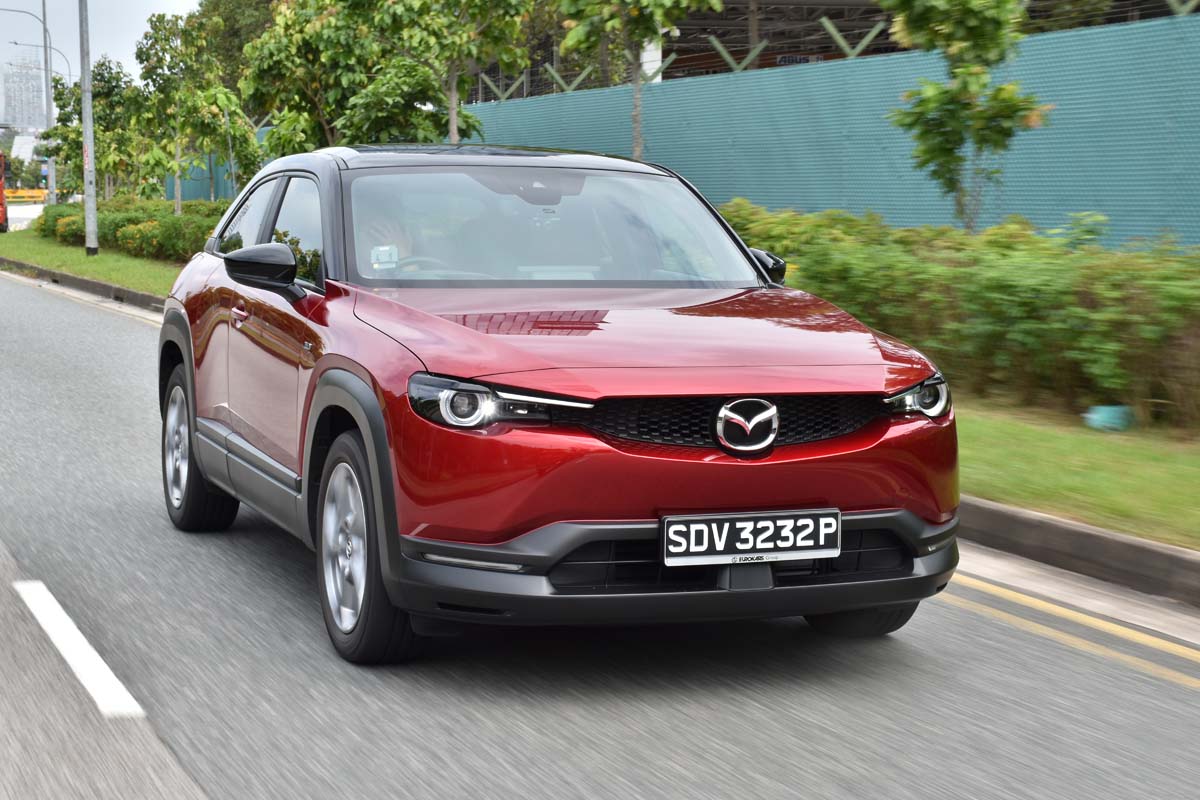
It’s a deft handler in the way it moves on the road, and with some practice you could almost just use the regenerative function of the electric motor to slow and stop the car instead of the brakes. There are ‘shifter paddles’ on the steering wheel but rather than change gears it sets the car to one of five regen modes, from very strong engine braking to almost freewheeling, which is an excellent way of conserving power on the highway.

It’s a well-balanced car with neutral handling characteristics that makes it very engaging and precise to drive, but in typical Japanese car tradition, it’s not very fast. The sprint time from standstill to 100km/h isn’t quoted, but we get a feeling that it’s in the region of 8.5 seconds or so. It’s also a Category A COE EV so don’t expect a wave of torque like you would find in a Tesla Model Y, but the MX-30 does accelerate smoothly and briskly, plus it is very calm and composed at highway speeds.
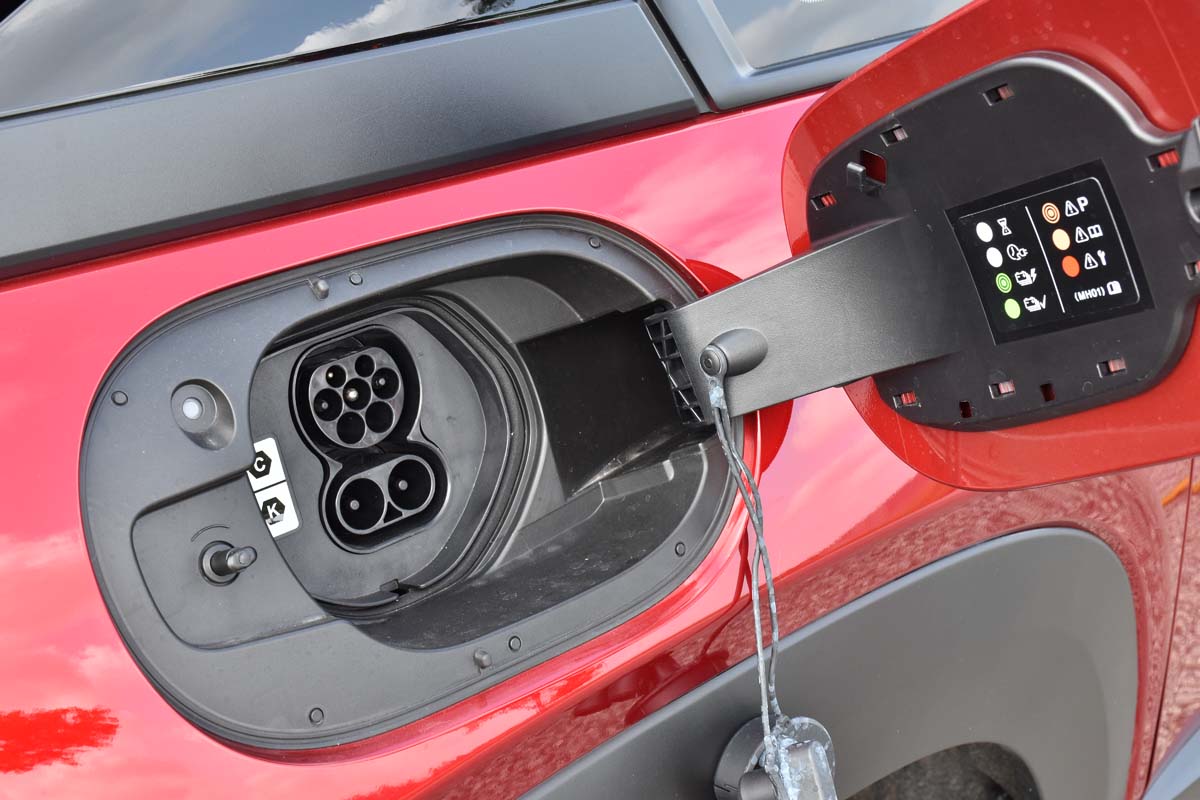
Where it trips over is in its range and battery capacity. The 35.5kWh battery delivers around 200km of total range in real-world use. Official efficiency is rated at 18.5kWh/100km, but we managed around 14.3kWh/100km over three days. The low battery warning comes on when there is 25 percent battery capacity, or around 50km of driving left in the car.
There are other small EVs like the Opel Mokka-e that can reliably drive more than 300km per charge, so the short range of the MX-30 is a little disappointing. Mazda’s designers have a reason for doing this and it’s a confluence of many engineering factors including overall battery size, but the fact remains that the car has a shorter range than many other EVs in its size category.
Let’s take for example, in Singapore, if you commute from Pasir Ris to your office in Queenstown daily, a distance of 25km. That’s 50km a day at minimum. If you detour to pick up your kids, family, or meet your friends, this could push your daily mileage to maybe 60km. Three days of driving would cover 180km, at which point the low battery warning would start nagging you to charge the car.
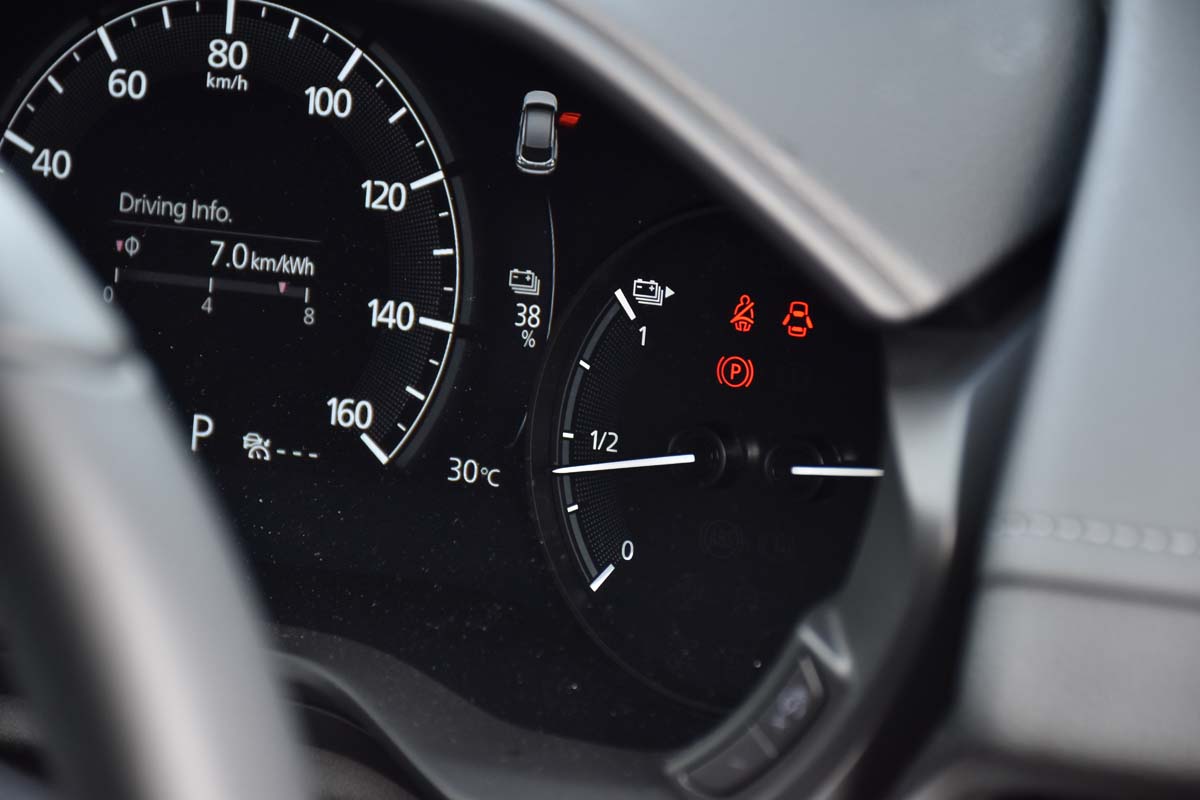
Also, few people really feel secure driving an EV with less than 50km of usable range left in the ‘tank’, so you’re likely to want to charge the car once every second day based on the commuting example given above. That’s a lot of downtime for the car in an EV charging space.
If you’re simply driving short distances though then the MX-30 would make much more sense, especially if you live on your own property and have your own home charger to plug in and charge at night.
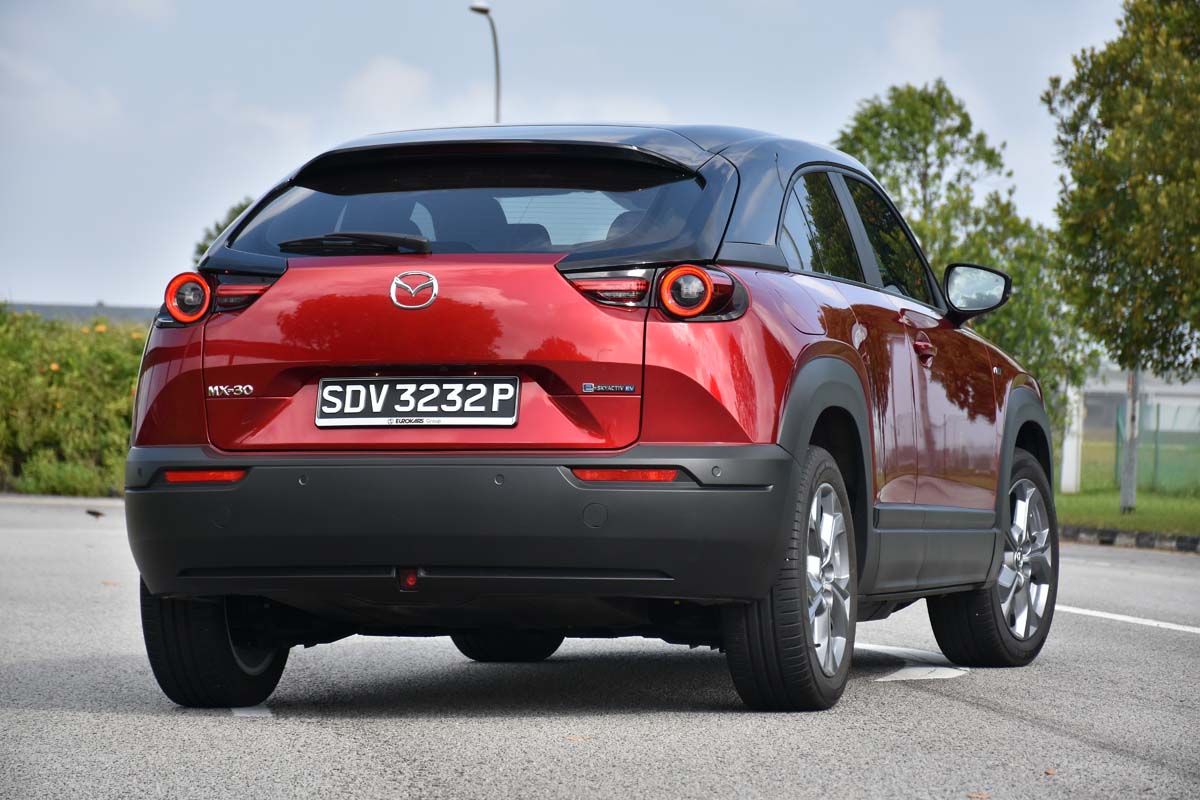
Yet for most drivers looking for an ‘affordable’ EV, the MX-30 might still be slightly above the price bracket that they are willing to pay for, especially with cheaper, but smaller cars like the Citroen e-2008 around. The MX-30’s high quality cabin does give it a nicely premium feel, but the 200km driving range is something that you will need to plan ahead for.
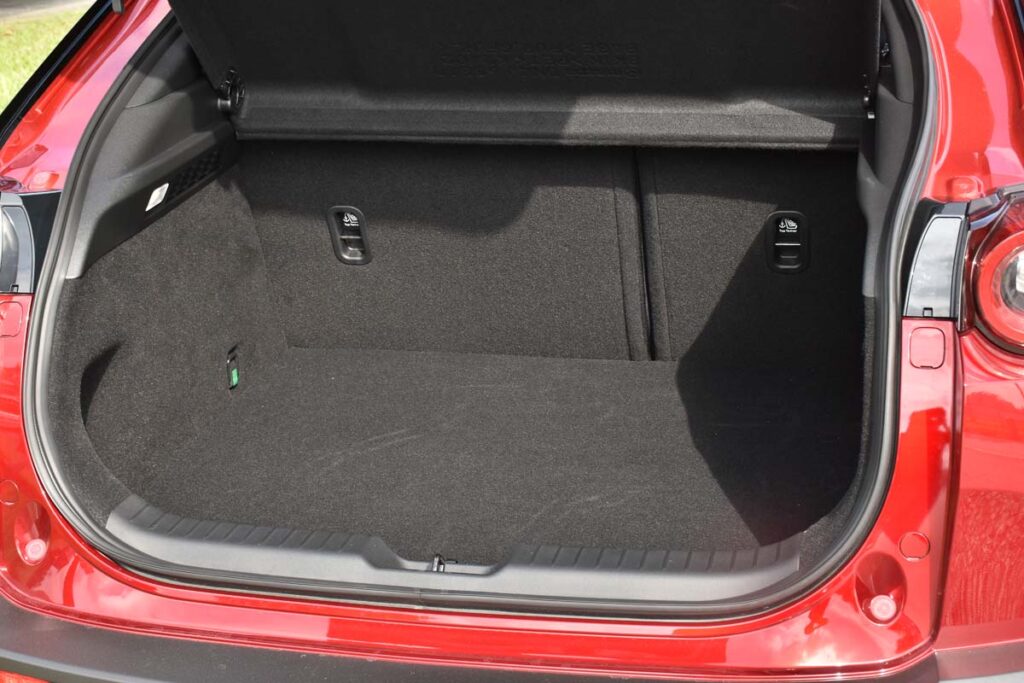




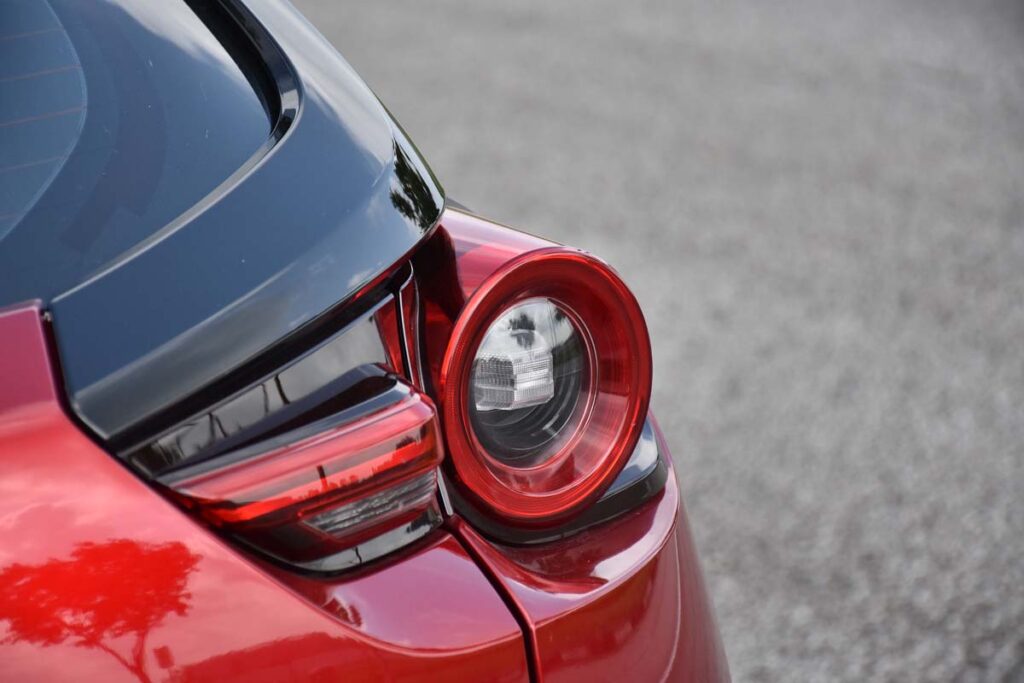
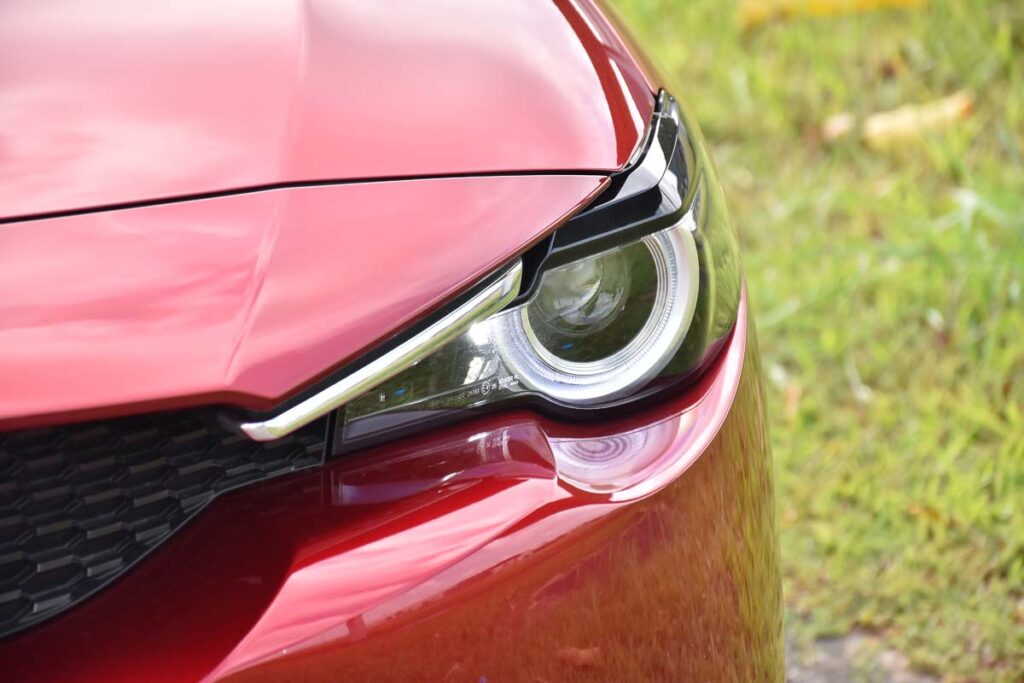






Mazda MX-30
*According to battery capacity and LTA homologated efficiency figures
- Aion Y Plus Premium 63.2kWh Review: OooOOoh! Square Room!
- The Denza D9 is BYD’s next big thing for Singapore, we went to China to take a look
- Cycle and Carriage Singapore launches new Smart showroom and unveils the Smart #3
- Audi Singapore to premier all-new Lifestyle destination platform by end-2024
- Zeekr X RWD Review: Futuristic urban cruiserweight champ
Link nội dung: https://nhungbaivanhay.edu.vn/mx-30-a73475.html